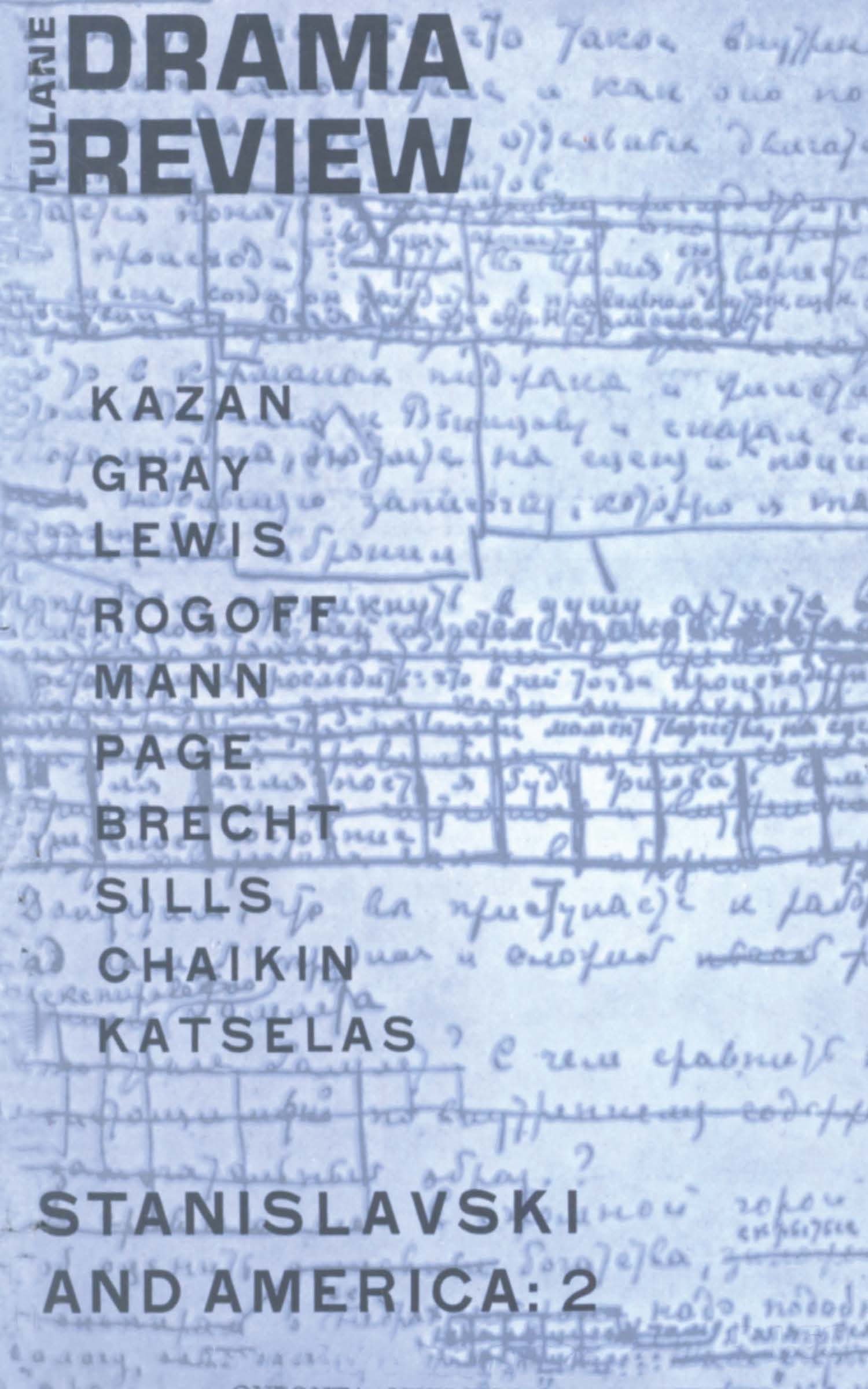No CrossRef data available.
Article contents
Stanislavski and the Playwright
Published online by Cambridge University Press: 03 February 2022
Extract
No name in acting is accorded the reverence by the American theatre as is Stanislavski's. He has been the high priest of American acting since the 1930's when the Group Theatre incorporated his system into their program; and today, a modified Stanislavski System is central to the “Method” of the Actor's Studio. Whether this great regard for Stanislavski has been a good thing for our theatre is much debated, but very little has been said about the effect of Stanislavski's System upon the way the actor approaches the written text of a play. It is time this be considered, for the effects have been insidious and may well have been harmful to the art of our theatre.
- Type
- Research Article
- Information
- Copyright
- Copyright © 1958 The Tulane Drama Review
References
Footnotes
1 Clurman, Harold, “Founders of the Modern Theatre,” Theatre Workshop I, 1937. p. 75.Google Scholar
2 K., Stanislavski, An Actor Prepares, New York, 1936. p. 18.Google Scholar
3 Ibid. pp. 294-5.
4 Houghton, Norris, Moscow Rehearsals, New York, 1936. p. 75.Google Scholar
5 Stanislavski, Op. Cit., p.126.
6 K., Stanislavski, My Life In Art, New York, 1956. pp. 347-8; 373-4.Google Scholar
7 D., Magarshack, Chehkov: A Life, New York, 1952. pp. 371-2.Google Scholar
8 Stanislavski, Op. Cit., pp. 354-5; 358.
9 Magarshack, Op. Cit., p. 359.
10 Ibid. p. 339.
11 Ibid. p. 332.
12 Stanislavski, Op.Cit, p. 348.
13 Magarshack, Op. Cit, p. 382.
14 Stanislavski, Op.Cit, p. 355.
15 Stanislavskis' system, if carried to its logical conclusion, would require that each actor have absolutely no knowledge of the other characters, and that in an ideal production each actor would be trained individually and then all would be brought together on the stage for the first time on opening night. The validity of this conclusion is based upon the fact that the moment an actor uses the other roles in the play to assist him in creating his part he is no longer being true to nature but is taking into account formal considerations which are not natural but artistic.
16 T. S., Eliot, “Rhetoric and Poetic Drama,” Selected Essays, New York, 1932. p. 28.Google Scholar


